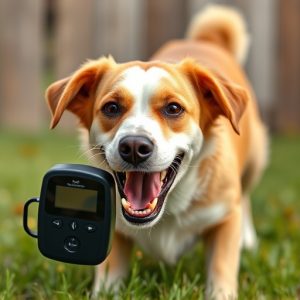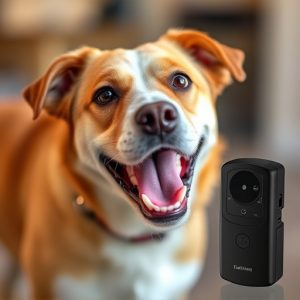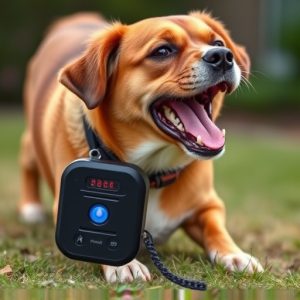Optimize Sonic Training: Safe Ultrasonic Repeller Placement Guide
Sonic animal training safety devices, or ultrasonic repellers, protect both animals and humans in va…….
Sonic animal training safety devices, or ultrasonic repellers, protect both animals and humans in various settings by emitting inaudible high-frequency sound waves. For optimal performance, place them strategically in high-risk areas like gardens, farms, and rooftops. The best placement focuses on entry points, gardens, or specific problem zones without disturbing humans. Regular maintenance ensures their effectiveness while adhering to animal welfare and human safety standards, making them the ideal solution for deterring pests and animals.
“Discover the revolutionary power of Sonic Animal Training Safety Devices, designed to humanely deter unwanted critters from your space. This comprehensive guide explores the inner workings of these innovative tools, offering a scientific perspective on how ultrasonic repeller devices repel animals without harm. We delve into optimal best placement for ultrasonic repeller devices strategies, ensuring maximum efficacy while maintaining user comfort. From understanding environmental considerations to ethical implementation, this article covers all you need to know about effectively and safely utilizing these game-changing animal training tools.”
- Understanding Sonic Animal Training Safety Devices: A Comprehensive Overview
- The Science Behind Ultrasonic Repeller Devices: How They Work
- Best Placement Strategies for Maximum Efficacy and User Comfort
- Considerations for Safe and Ethical Use in Different Environments
Understanding Sonic Animal Training Safety Devices: A Comprehensive Overview
Sonic animal training safety devices, also known as ultrasonic repellers, are innovative tools designed to protect both animals and humans in various settings. These devices emit high-frequency sound waves that are inaudible to humans but can effectively deter animals from specific areas. Understanding how they work is crucial when considering their best placement for optimal effectiveness.
The key to successful deployment lies in strategic positioning. High-risk areas where animal intrusion is a concern, such as gardens, farms, and rooftops, are ideal locations for these devices. By placing them at the perimeter of these zones, you create a protective barrier that animals will instinctively avoid. Additionally, considering factors like weather resistance and power sources ensures their longevity and consistent performance.
The Science Behind Ultrasonic Repeller Devices: How They Work
Ultrasonic repeller devices utilize a fascinating scientific principle to deter pests and unwanted animals. These devices emit high-frequency sound waves, typically beyond the human hearing range, which effectively target specific animal species. The technology is based on the idea that each animal has a unique sensitivity to ultrasonic frequencies, making it possible to create a repelling effect without causing harm. When an animal enters the device’s range, they experience discomfort due to the intense high-pitched noise, prompting them to leave the area.
The best placement for these devices is often near entry points, such as doors or windows, where animals might try to gain access. Strategically positioning ultrasonic repellers in gardens, farms, or even indoor spaces can help keep pests at bay. The key lies in understanding the behavior of the target animals and aligning the device’s frequency range accordingly. Different species have varying sensitivity levels, so selecting a device designed for specific pests ensures maximum effectiveness.
Best Placement Strategies for Maximum Efficacy and User Comfort
When it comes to implementing ultrasonic repeller devices, strategic placement is key to achieving maximum efficacy and user comfort. The best approach involves identifying problem areas where unwanted animals are most prevalent and placing the devices accordingly. For example, if rodents are a concern in your home or business, position the repellers near entry points like doors, windows, and vents. This ensures that any approaching intruders will be met with an unpleasant sound, effectively deterring them.
Consider using multiple devices to cover larger areas, ensuring complete coverage without creating uncomfortable noise levels for humans. For outdoor applications, strategic placement along fences or walls can help keep animals away from gardens or crop fields. Regular maintenance and periodic testing of these devices are also essential to ensure they remain effective over time.
Considerations for Safe and Ethical Use in Different Environments
When considering the safe and ethical use of sonic animal training safety devices, it’s crucial to understand their best placement within various environments. These ultrasonic repeller devices are designed to emit high-frequency sound waves that are generally inaudible to humans but can deter animals like cats, dogs, or rodents from specific areas. For outdoor spaces like gardens, patios, or balconies, strategically placing these devices along perimeters or in problem zones can be highly effective, minimizing unwanted animal intrusions without causing harm.
In indoor settings, such as homes, offices, or commercial facilities, the best placement differs slightly. For instance, in homes, they can be positioned near entry points like doors, windows, or vents to prevent animals from gaining access. In offices, focus on areas where animals might disrupt operations, such as around trash cans or storage rooms. Regular maintenance and periodic testing are essential to ensure these devices remain functional and effective while adhering to ethical standards that prioritize animal welfare and human safety.
Sonic animal training safety devices, particularly ultrasonic repellers, offer a humane and effective solution for deterring unwanted animals. By understanding their science and optimal placement strategies, users can maximize their efficacy while ensuring user comfort and ethical use across diverse environments. When deployed responsibly, these devices contribute to a harmonious coexistence between humans and wildlife, making them an excellent choice for both residential and commercial applications. To achieve the best results with ultrasonic repellers, consider strategic placement, consistent usage, and regular maintenance – all key factors for achieving maximum protection.


